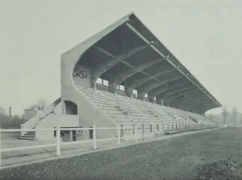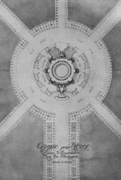|
Gustave Saacké
Gustave Saacké (20 August 1884 – 18 April 1975) was a French architect. In 1932 he won a gold medal in the art competitions of the Olympic Games together with Pierre Montenot and Pierre Bailly for their design of a "Cirque pour Toros" ("Circus for Bullfights").[1] WorksJean Bouin stadium (Paris, 1925)Associating with Jacques Lambert and Pierre Bailly, Saacké worked on a projet for a stadium in the 16th district of Paris.[2] The stadium was of a quite modern style, enabled by the use of concrete and a light shell. The stadium underwent renovations in 1968 but was ultimately destroyed in 2010 in order to build a new rugby stadium.[3] The New Caledonian Pavilion at the 1931 Colonial Exhibition in Paris.In 1930, Gustave Saacké, along with his former partner Pierre Bailly and new partner Pierre Montenot, was chosen as an architect for the New Caledonian Pavilion. They had already worked on "a study of a project to build a post office in Nouméa",[4] New Caledonia's capital. The architects took inspiration from vernacular Kanak architecture and especially the chief's huts. They picked characteristic features such as the pointed roof or the carved door frames. They adapted the classic hut by adding two side sections, the one on the right dedicated to the Wallis Islands and the left one for the New Hebrides.[5] Gold Medal: Cirque pour Toros, 1932 Los Angeles OlympicsIt is quite surprising that Saacké, Bailly et Montenot won the gold medal. The project they presented, surprisingly, was unrelated to an olympic sport, as Cirque pour Toros was in fact a projet for a bullring.[6]
References
External links
Information related to Gustave Saacké |
|||||||||||||||||||||||||||||||||


